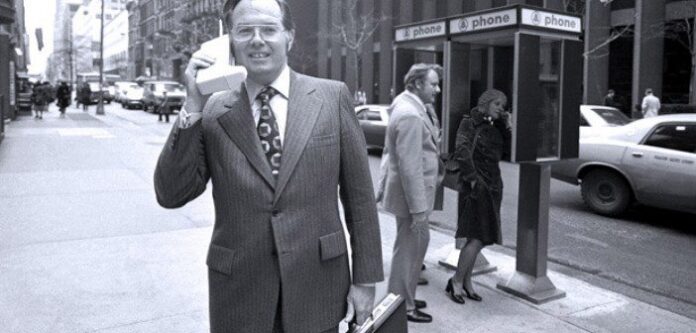Editor’s Note: RCR Wireless News goes all in for “Throwback Thursdays,” tapping into our archives to resuscitate the top headlines from the past. Fire up the time machine, put on the sepia-tinted shades, set the date for #TBT and enjoy the memories!
Everybody loves an early adopter
NEW YORK-As the 1996 campaign season gets into high gear, wireless providers might do well to consider this profile when looking for loyal customers most likely to vote early and often for communications services: they are young, religious, affluent, well-read and tuned-in. These characteristics represent snippets of information from an elaborate set of desirable-customer characteristics, which Technology Trends of Sausalito, Calif., has developed entirely for cellular and personal communications services companies. Technology Trends launched its business in 1992 with “economic modeling research to help PCS bidders in the A- and B-block auctions determine the value of licenses,” said Hunt C. Eggleston, company founder and president. An alumnus of AT&T and U S West, Eggleston said he spent much of his earlier career helping identify likely early adopters of emerging technologies like video text, picture phones, cellular phones and CD-ROM. … Read more
International telecom trade frustrations
WASHINGTON-The Clinton administration, having shuffled around key leadership in the aftermath of the plane crash that killed Commerce Secretary Ron Brown and 34 others during a Balkan trade mission, is aggressively moving ahead to reach a global telecommunications liberalization accord in Geneva this week and to promote privatization and competition in developing nations at a conference in South Africa in mid-May. Telecommunications trade talks under auspices of the World Trade Organization are due to end tomorrow in Geneva. The outcome is anything but certain. U.S. negotiators say they have been frustrated with the lack of reciprocity from other nations insofar as getting them to agree to open telecom markets to the degree America is willing to open its own. Meanwhile, more than 30 countries will be represented at the Information Society and Development Conference, May 13-15, in Midrand, South Africa, just outside of Johannesburg. “We’re talking about a world in which far too many people lack access to basic telecommunications,” said Larry Irving, chief of the National Telecommunications and Information Administration. … Read more
CDMA is coming! CDMA is coming!
SAN FRANCISCO–AirTouch Communications said it will announce in May plans to launch Code Division Multiple Access service on a limited basis to some existing customers. The cellular operator built out a CDMA system in the Los Angeles area last year and hoped to launch commercial service late last summer. … Read more
Meanwhile, South Korea-Samsung Electronics Co. announced an agreement with Sprint Spectrum L.P. to provide 1.3 million Code Division Multiple Access personal communications services terminals for the U.S. market. Value of the transaction was not disclosed. Samsung said it will begin mass producing PCS terminals at its plant in Kumi, Korea, in March 1997. The company will supply 300,000 units to Sprint Spectrum in 1997 and an additional one million units in 1998. The arrangement also calls for the joint development of a dual mode PCS terminal that is compatible with both analog and digital systems, said Samsung. … Read more
Wireless + compute = PDA
The fusion of wireless telecommunications and computer processing power into a device that fits your hand ought to be a slam-dunk proposition. It lets time-critical information go unobtrusively to where it can be most productive-in the field-rather than requiring the user to go where the information resides. Yet both industries have been struggling to come together for three years since the advent of Apple Computer Inc.’s Newton MessagePad established the product category called “Personal Digital Assistants” in 1993. “The concept of the PDA was created on the principle of it being a communications device,” noted Gerry Purdy, president of the Cupertino, Calif.-based consultancy Mobile Insights Inc. And plans were announced to make the Newton wirelessly enabled even before its commercial launch. Unfortunately, that launch failed due to Newton’s flawed handwriting recognition interface that was roundly ridiculed by everyone from industry luminaries to the The Simpsons cartoon series. Since then, the industry has been grasping for elusive market success with a swirl of form factors, price points and connectivity options for the PDA. … Read more
100 million pagers expected by 2006
NEW YORK-Operating outside the limelight cast by telecom deregulation and the Federal Communications Commission’s C-block auction for personal communications service, the paging sector is pursuing its own profitable agenda in the changing wireless environment. By 2006, paging revenues are projected to more than triple to $11 billion and pagers in service almost quadruple to nearly 100 million, compared to 1994 numbers, according to Sharon Armbrust, vice president and senior analyst for Paul Kagan Associates Inc., Carmel, Calif. Armbrust served as moderator at a Kagan conference titled Wireless Telecom Values and Finance, held last week. “Paging stocks have been weak in the first quarter because of fears that paging would be cannibalized by broadband or that one-way paging will be overrun by two-way,” said John L. Bauer III, senior vice president of Lehman Brothers Inc., New York. “But 90 percent of communications are one-way and 70 percent of e-mail and voice mail needs no response. Paging represents a time shift, same as the VCR.” … Read more
Check out RCR Wireless News’ Archives for more stories from the past.

